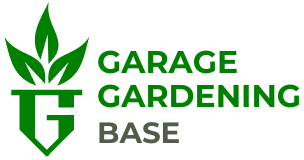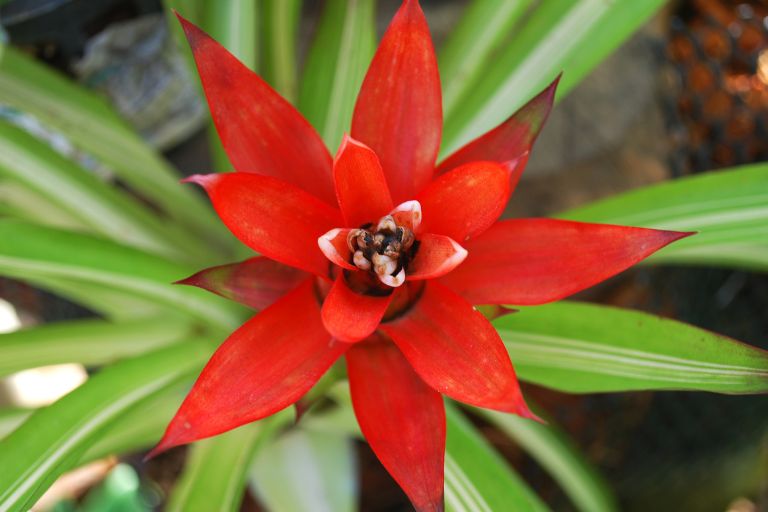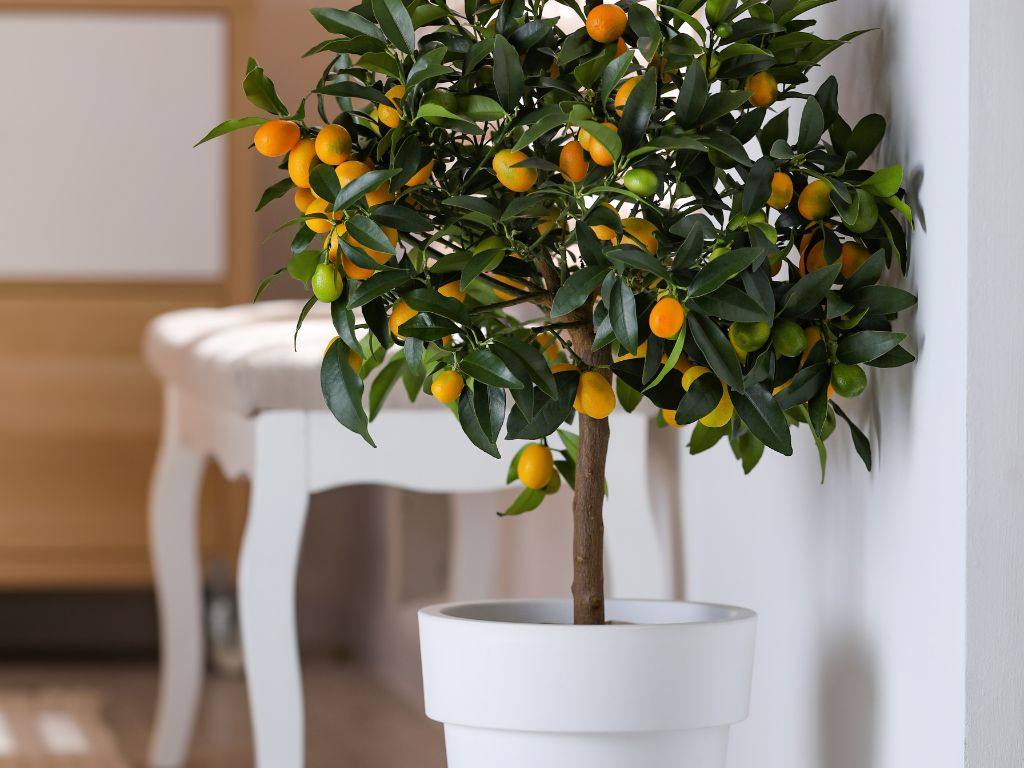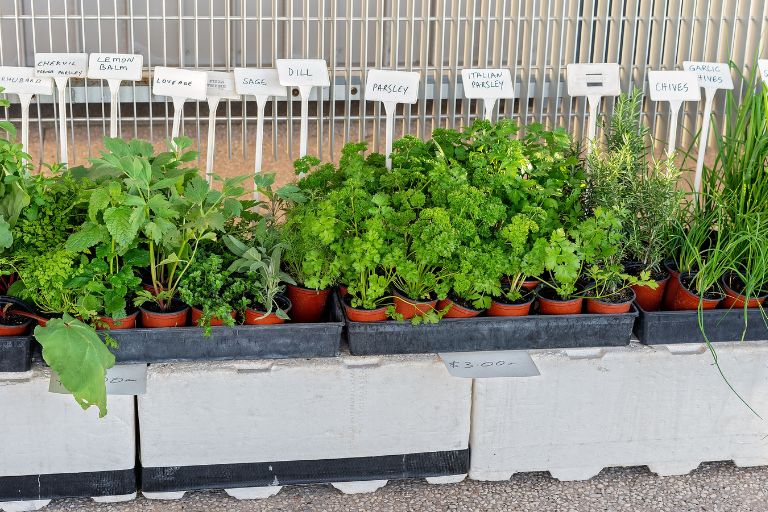Keeping Your Garage Garden Pest-Free: Essential Tips for Effective Pest Control

Tucked away in the confines of your garage is a sanctuary of greenery – a space where you can cultivate your own botanical oasis within easy reach of home. But this intimate retreat isn’t immune to unwelcome guests. From scurrying rodents to voracious insects, pests can quickly turn your garage garden from a source of serenity into a battleground for infestation.
In the pursuit of vibrant blooms and thriving foliage, the challenge of pest control looms large. Understanding the diverse range of invaders that can invade your garage garden is paramount, as is implementing effective strategies to protect your plants, structures and stored items from harm.
This article is your comprehensive guide to mastering the art of garage garden pest control. We’ll delve into the intricacies of prevention techniques, explore natural and chemical pest control methods, and unveil the principles of Integrated Pest Management (IPM) specifically tailored to the unique dynamics of your garden space. With the right knowledge and a proactive approach, you’ll transform your garage garden into an oasis of calm, where lush greenery flourishes and pests are kept firmly at bay.
Common Pests in Garage Gardens
Common pests that typically infest garage gardens include:
Rodents
Mice, rats and squirrels are notorious for seeking shelter and food sources in garage gardens. They can chew through plant roots, stems and leaves, causing extensive damage. In addition, rodents can gnaw on wooden structures, wiring and insulation within the garage, creating a fire hazard and compromising structural integrity.
Insects
Ants – Ant colonies can quickly infest garage gardens, especially if attracted by spilled food or moisture. They can damage plants by tunneling through the soil, disturbing roots and feeding on plant material.
Aphids – These small, sap-sucking insects reproduce rapidly and can quickly infest garage garden plants, causing wilting, yellowing leaves and stunted growth.
Beetles – Various species of beetles, such as the Japanese beetle or Colorado potato beetle, can feed on foliage, flowers and fruit, causing defoliation and reduced plant vigour.
Caterpillars – Caterpillars of moths and butterflies can consume large amounts of plant material, defoliating leaves and causing significant damage to crops and ornamentals.
Spider mites – These tiny arachnids feed on plant sap, causing spotting, yellowing and premature leaf drop. Heavy infestations can weaken plants and inhibit growth.
Other Critters
Snails and slugs – These molluscs are nocturnal feeders that can devour tender foliage, leaving unsightly holes and slime trails in their wake.
Voles – Voles are small rodents that tunnel underground and can feed on plant roots and bulbs, damaging the root system and inhibiting plant growth.
Birds – Some bird species can peck at fruit and vegetables, causing cosmetic damage and reducing crop yields.
Squirrels – In addition to rodents, squirrels can raid bird feeders and chew on garden structures, wires and hoses.
The potential damage caused by these pests to plants, structures and stored items in the garage can be significant:
Plants – Pests can feed on plant tissues, sap, fruit and flowers, resulting in defoliation, wilting, yellowing, stunted growth and reduced yields. Severe infestations can weaken plants and, in extreme cases, cause them to die.
Structures – Rodents, especially mice and rats, can gnaw on wooden structures, electrical wiring, insulation and stored items, causing damage and creating fire hazards. Insects can also cause structural damage by burrowing into wooden surfaces or compromising structural integrity through their activities.
Stored items – Pests can contaminate stored food, damage packaging materials and cause spoilage. In addition, rodents and insects can nest in stored items, causing hygiene problems and potential health risks to occupants.
Prevention Techniques
Implementing proactive measures to prevent pest infestations in the garage garden is crucial to maintaining a healthy and thriving garden environment. Some effective strategies include:
Maintain cleanliness – Keep the garage garden area clean and free of debris, leaves and standing water that can attract pests. Sweep regularly and remove any organic matter that could provide food or shelter for pests.
Organise storage – Store garden tools, pots and other equipment in sealed containers or on raised shelves to minimise pest hiding places. Avoid clutter and keep stored items off the ground to reduce access for rodents and insects.
Seal entry points – Inspect the garage for potential entry points where pests could gain access, such as gaps around doors, windows, vents and utility openings. Seal any cracks or holes with caulk, weather stripping or hardware cloth to prevent pests from entering.
Install screens – Install fine-mesh screens on windows, vents and openings to prevent insects, birds and rodents from entering the garage garden area while allowing ventilation.
Eliminate standing water – Eliminate any sources of standing water in the garage, such as leaks, drips or condensation, as these can attract pests such as mosquitoes and ants. Repair leaks immediately and use dehumidifiers if necessary to reduce humidity levels.
Use pest-resistant plants – Choose plants that are less susceptible to pest damage or resistant to common garden pests. Research pest-resistant varieties and incorporate them into your garage garden to minimise the risk of infestation.
Practice crop rotation – Rotate crops regularly to disrupt pest life cycles and reduce pest build-up in the soil. Avoid planting the same crops in the same place year after year to prevent pest populations from establishing.
Use natural barriers – Use physical barriers such as row covers, netting or fencing to protect plants from pests such as birds, rodents and larger insects. These barriers can help deter pests while still allowing sunlight and airflow to reach the plants.
Encourage beneficial predators – Attract beneficial insects, birds and other predators to the garage garden by providing habitat such as native plants, bird feeders and insect hotels. These natural enemies can help keep pest populations in check without the need for chemical pesticides.
Regular monitoring – Conduct regular inspections of plants, soil and stored items in the garage garden to detect early signs of pest activity. Address any pest problems promptly with appropriate control measures to prevent infestations from spreading.
Maintaining cleanliness and organisation in the garage is essential to deter pests and create a less hospitable environment for infestations. Some tips to help you keep your garage tidy and pest-free include:
Regular cleaning routine – Schedule regular cleaning sessions to remove clutter, debris and accumulated dust from the garage. Sweeping, vacuuming and mopping the floors will help eliminate food sources and hiding places for pests.
Dispose of rubbish properly – Dispose of household waste, including food scraps and packaging, in sealed bins with tight-fitting lids. Remove full rubbish bags from the garage immediately to prevent odours and attract pests.
Store food safely – Avoid storing food in the garage as it can attract pests such as rodents, ants and cockroaches. If you must store food in the garage, use airtight containers made of metal or heavy-duty plastic to prevent access by pests.
Organise stored items – Keep gardening supplies, tools and equipment neatly organised on shelves, racks or cabinets. Use labelled containers to store smaller items and avoid leaving items strewn on the floor, which can provide hiding places for pests.
Declutter regularly – Remove unnecessary items, old newspapers, cardboard boxes and other clutter from the garage to minimise pest hiding places. Donate or throw away unwanted items and avoid storing items directly on the floor.
Seal cracks and gaps – Check the garage for cracks, gaps and openings where pests can enter from the outside. Seal gaps around doors, windows, vents and utility penetrations with weather stripping, caulk or hardware cloth to prevent pests from gaining access.
Install door sweeps – Install door sweeps or thresholds on garage doors to create a tight seal along the bottom edge to prevent pests from squeezing underneath. Make sure doors close securely and repair any damaged weather stripping or hinges.
Maintain outdoor areas – Keep the area around the garage clean and well-maintained by trimming vegetation, removing debris and eliminating sources of standing water. Trim tree branches and shrubs away from the garage to prevent pests from using them as bridges to access the structure.
Use pest-resistant materials – Choose pest-resistant materials for garage construction and storage, such as metal shelving, plastic storage bins, and concrete flooring. Avoid using materials such as untreated wood, which may attract pests or be susceptible to damage.
Watch for signs of pest activity – Check the garage regularly for signs of pest activity, such as droppings, chewing marks, nests or unusual odours. Address any pest problems immediately with appropriate control measures to prevent infestations from worsening.
Using barriers and deterrents is an effective strategy for keeping pests away from plants and stored items in the garage. Some methods you can use:
Physical barriers
Row covers – Use row covers made of lightweight fabric or mesh to physically protect plants from pests while allowing sunlight, water and air to pass through. These covers can be draped over plants or supported by hoops to create a barrier.
Netting – Install bird or insect netting around plants to prevent birds, rodents and larger insects from accessing them. Secure the netting tightly to prevent gaps through which pests can enter.
Fencing – Install fencing around the perimeter of the garage garden to deter larger pests such as rabbits, deer and raccoons. Choose fence materials and designs that are sturdy and high enough to prevent pests from jumping or burrowing underneath.
Hardware cloth – Line raised beds or planters with hardware cloth or wire mesh to prevent burrowing pests such as voles and moles from tunneling into the soil and damaging plant roots.
Natural deterrents
Companion planting – Plant pest-repellent herbs, flowers and vegetables next to susceptible plants to deter pests. For example, marigolds can repel nematodes, while aromatic herbs such as basil and mint can deter insects.
Beneficial insects – Attract beneficial insects such as ladybugs, lacewings and predatory wasps to the garage garden by planting flowers that provide nectar and pollen. These insects prey on pests such as aphids, caterpillars and mites, helping to keep populations in check.
Predator decoys – Place decoys or models of natural predators, such as owls, hawks or snakes, near vulnerable plants or stored items to deter pests. The presence of these predators can make pests feel threatened and less likely to approach.
Chemical deterrents
Repellent sprays – Apply commercially available repellent sprays or homemade solutions to plants to deter pests. Common ingredients include garlic, chillies, neem oil and soap, which can repel insects and other pests without harming plants.
Scented repellents – Hang scented repellents such as mothballs, sachets of dried herbs or cotton balls soaked in essential oils near stored items to repel pests. Strong-smelling substances such as peppermint, lavender or citrus can deter rodents, insects and other pests.
Electronic deterrents
Ultrasonic devices – Install ultrasonic pest repellers in the garage that emit high-frequency sound waves that are uncomfortable for pests but harmless to humans and pets. These devices can deter rodents, insects and other pests from entering the garage garden area.
Motion-activated lights or sound devices – Install motion-activated lights or sound devices around the perimeter of the garage to frighten and deter nocturnal pests such as raccoons, possums and rodents.
Natural Pest Control Methods
Finding eco-friendly and non-toxic pest control solutions is not only good for the environment, but also for maintaining a safe and healthy gardening space in your garage. Some effective methods include:
Neem oil – Neem oil is derived from the neem tree and acts as a natural insecticide and fungicide. It is effective against a wide range of pests, including aphids, mealy bugs, mites and caterpillars. Mix neem oil with water and a small amount of dish soap to make a spray solution that can be applied to plants to control pests.
Insecticidal soap – Insecticidal soap is made from potassium salts of fatty acids and works by suffocating soft-bodied insects such as aphids, whiteflies and spider mites. It is safe to use on most plants and leaves no harmful residue. Apply insecticidal soap as a spray directly to affected plants, making sure to cover all surfaces where pests are present.
Diatomaceous earth (DE) – Diatomaceous earth is a naturally occurring sedimentary rock powder composed of fossilized diatoms. It works by absorbing lipids from the exoskeletons of insects, causing dehydration and death. Sprinkle food grade diatomaceous earth around the base of plants or in pest infested areas to control crawling insects such as ants, cockroaches and beetles.
Beneficial insects – Introduce beneficial insects to the garage garden to prey on pest populations. Ladybugs, lacewings, predatory mites and parasitic wasps are examples of beneficial insects that can help control aphids, mites, caterpillars and other pests. You can buy beneficials online or attract them naturally by planting flowers that provide nectar and pollen.
Essential oils – Essential oils derived from plants such as peppermint, rosemary, thyme and eucalyptus have insect repellent properties and can be used to deter pests. Mix a few drops of essential oil with water in a spray bottle and apply to plants or around the garage garden to repel insects. Citronella oil is particularly effective against mosquitoes.
Garlic and Chilli Spray – Garlic and chilli pepper spray is a homemade remedy that can repel a variety of pests, including aphids, caterpillars and beetles. Mix garlic cloves and chilli peppers with water, strain the mixture and dilute with more water. Spray the solution onto plants to deter pests, but be careful as it can cause irritation to skin and eyes.
Traps and barriers – Use physical traps and barriers to trap or exclude pests from the garage garden. Sticky traps, pheromone traps and light traps can be used to monitor and reduce pest populations. In addition, barriers such as copper tape or diatomaceous earth can deter slugs, snails and crawling insects from reaching plants.
Cultural practices – Use cultural practices that promote plant health and reduce pest susceptibility. Proper irrigation, adequate plant spacing and maintaining good soil fertility can help plants withstand pest pressure. Regularly remove weeds and diseased plant material to minimise pest habitats and prevent infestations.
Using beneficial insects such as ladybirds and praying mantises to control pest populations is a highly effective and environmentally friendly method known as biological control. These natural predators can help keep pest populations in check by preying on insects that feed on plants in the garage garden. Below is a discussion of how ladybugs and praying mantises can be used:
Ladybirds
Role in pest control – Ladybugs are voracious predators of soft-bodied insects, particularly aphids, scales, mealybugs and spider mites. They feed on pest eggs, larvae and adults, effectively reducing pest populations on crops.
Life cycle – Ladybugs undergo a complete metamorphosis, starting as eggs laid near pest infested plants. The eggs hatch into larvae, which feed on pests before pupating and emerging as adult ladybirds.
Attract ladybugs – To attract ladybugs to your garage garden, provide suitable habitat and food sources. Plant nectar-rich flowers such as dill, fennel, coriander and marigolds to provide food for adult ladybugs. Also provide shelter in the form of dense vegetation, mulch or small structures where ladybugs can hibernate.
Supplemental releases – If natural populations of ladybugs are insufficient, you can purchase live ladybugs from garden centres or online suppliers and release them in the garage garden. Release ladybugs in the evening near pest plants to encourage them to stay and feed.
Praying mantises
Role in pest control – Praying mantises are formidable predators that feed on a wide range of insects, including aphids, flies, moths, beetles and caterpillars. They are known for their ambush hunting behaviour and powerful grasping forelegs used to capture prey.
Life cycle – Praying mantises undergo incomplete metamorphosis, with egg cases called oothecae containing multiple eggs that are laid in sheltered locations. Once hatched, praying mantis nymphs resemble miniature adults and undergo several molts before reaching maturity.
Attracting praying mantises – Praying mantises are attracted to diverse habitats with abundant prey and suitable shelter. Provide a variety of plants to attract prey insects, along with dense vegetation, shrubs and tall grasses where mantises can hide and ambush prey.
Additional releases – While praying mantises can be attracted to the garage garden naturally, you can also purchase egg cases containing mantis eggs and place them strategically around the garden. Once hatched, the praying mantis nymphs will disperse and begin hunting pests.
Homemade pest control products made from common household ingredients are a cost-effective and environmentally friendly alternative to chemical pesticides. Some effective homemade remedies for pest control in the garage garden include:
Garlic and Chilli Spray
Ingredients – Garlic cloves, chilli peppers, water, liquid soap.
Method – Crush several garlic cloves and chilli peppers and soak in hot water for several hours. Strain the mixture and add a few drops of liquid soap to help the solution adhere to plant surfaces. Spray the solution on plants to repel aphids, caterpillars, beetles and other pests.
Neem Oil Spray
Ingredients – Neem oil, liquid soap, water.
Method – Mix neem oil with water according to the instructions on the product label. Add a few drops of liquid soap to emulsify the oil. Spray the solution on plants to control pests such as aphids, mites, whiteflies and scale. Neem oil disrupts the insect’s hormonal balance and acts as a repellent and insecticide.
Vegetable oil spray
Ingredients – Vegetable oil (such as soybean or rapeseed oil), liquid soap, water.
Method – Mix vegetable oil and liquid soap in a ratio of 2 tablespoons of oil to 1 teaspoon of soap. Dilute the mixture with water (approximately 1 quart to 1 gallon of water). Shake well and spray on plants to suffocate soft-bodied insects such as aphids, mites and scales.
Diatomaceous earth (DE) dust
Ingredients – Food grade diatomaceous earth.
Method – Sprinkle a thin layer of food grade diatomaceous earth around the base of plants or in areas where pests are present. DE works by absorbing lipids from the exoskeletons of insects, causing dehydration and death. It is effective against crawling insects such as ants, cockroaches, earwigs and slugs.
Essential oil repellent spray
Ingredients – Essential oils (e.g. peppermint, lavender, citrus), water, liquid soap.
Method – Mix a few drops of essential oil with water and a small amount of liquid soap in a spray bottle. Shake well and spray the solution on plants or around the garage garden area to repel pests such as ants, aphids, mosquitoes and spiders. Reapply as needed, especially after rain.
Citrus peel repellent
Ingredients – Citrus peel (lemon, orange or grapefruit), water.
Method – Boil citrus peel in water for several minutes, then strain and allow to cool. Fill a spray bottle with the citrus infused water and apply to plants as a natural repellent against aphids, ants and other pests. The strong citrus scent will act as a deterrent.
Coffee Ground Barrier
Ingredients – Used coffee grounds.
Method – Spread a layer of used coffee grounds around the base of plants or in areas where pests are present. Coffee grounds act as a barrier to deter slugs, snails and ants as they dislike the texture and acidity of coffee grounds. Coffee grounds can also improve soil quality and deter certain soil-dwelling pests.
These homemade pest control products are effective alternatives to chemical pesticides for controlling garage garden pests. Experiment with different formulations and adjust concentrations as needed to find the most effective solution for your specific pest problems.
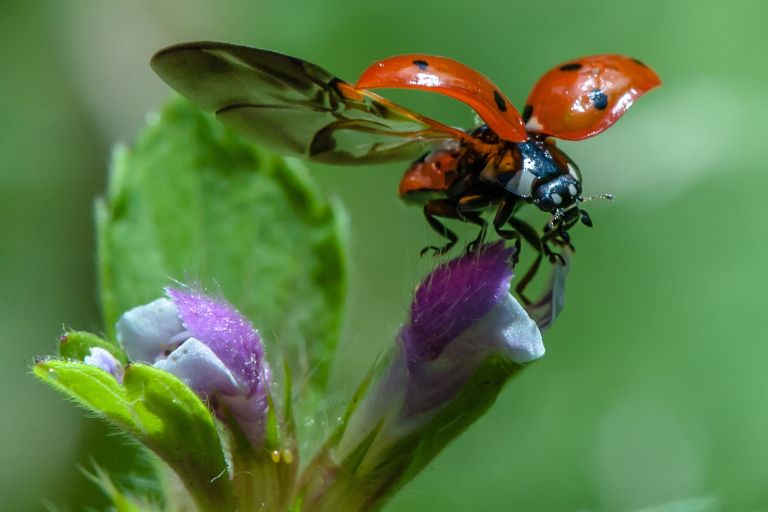
Chemical Pest Control Options
Chemical pesticides and insecticides are widely used to control pests in the garage garden, providing quick and effective solutions to pest problems. Some common types of chemical pesticides and insecticides available for use in the garage garden include:
Synthetic pyrethroids
Description – Synthetic pyrethroids are man-made insecticides derived from natural pyrethrins found in chrysanthemum flowers. They are highly effective against a wide range of pests including ants, aphids, beetles, caterpillars and mosquitoes.
How they work – Pyrethroids disrupt the nervous system of insects, leading to paralysis and eventual death. They are fast acting and provide rapid knockdown of pests on contact.
Usage – Synthetic pyrethroids are available in a variety of formulations, including sprays, dusts, granules and concentrates. They can be applied directly to plants, soil or surfaces where pests are present.
Organophosphates
Description – Organophosphate insecticides are synthetic chemicals that inhibit the activity of acetylcholinesterase, an enzyme essential for nerve function in insects. They are effective against a wide range of pests, including aphids, thrips, beetles and caterpillars.
How they work – Organophosphates disrupt the nervous system of insects by overstimulating nerve cells, leading to paralysis and death. They are generally less selective and may also affect beneficial insects and other non-target organisms.
Usage – Organophosphate insecticides are available in a variety of formulations, including sprays, dusts and granules. They can be applied to plants, soil or surfaces where pests are present, but care must be taken because of their potential toxicity to humans and animals.
Carbamates
Description – Carbamate insecticides are synthetic chemicals that, like organophosphates, also inhibit the activity of acetylcholinesterase. They are effective against a wide range of pests, including aphids, beetles, caterpillars and mites.
How they work – Carbamates disrupt the nervous system of insects by blocking the enzyme acetylcholinesterase, leading to nerve overstimulation and paralysis. They are relatively fast-acting and provide rapid pest control.
Usage – Carbamate insecticides are available in a variety of formulations, including sprays, dusts, granules and baits. They can be applied to plants, soil or surfaces where pests are present, but care must be taken to follow label instructions and safety precautions.
Systemic insecticides
Description – Systemic insecticides are absorbed by plants and transported throughout the vascular system, providing internal protection against pests. They are effective against sucking insects such as aphids, whiteflies and scales.
How they work – Systemic insecticides are taken up by plants through roots, stems or leaves and distributed to all parts of the plant, including leaves, stems, flowers and fruits. When pests feed on treated plants, they ingest the insecticide and are poisoned.
Usage – Systemic insecticides are available as granules, drenches or soil applications. They are applied to the soil or directly to the plants and absorbed by the roots. Systemic insecticides provide long-lasting protection and are particularly useful for controlling persistent or hidden pests.
Botanical Insecticides
Description – Botanical insecticides are derived from natural plant extracts and compounds such as pyrethrins, neem oil and rotenone. They are considered less toxic to humans, animals and the environment than synthetic chemical pesticides.
How they work – Botanical insecticides work by interfering with insect behaviour, growth or reproduction. Depending on the active ingredient, they can act as repellents, feeding deterrents, growth regulators or neurotoxins.
Usage – Botanical insecticides are available in a variety of formulations, including sprays, dusts, concentrates and oils. They can be applied directly to plants or surfaces where pests are present and are generally safer for use around humans, pets and beneficial insects.
Baits and traps
Description – Baits and traps are used to attract and kill pests by ingestion or physical capture. Baits may contain toxic chemicals or insect growth regulators, while traps may use sticky surfaces, pheromones or light to attract and trap pests.
How they work – Baits work by causing pests to consume toxic substances, resulting in death. Traps use adhesive surfaces, sticky substances or mechanical mechanisms to capture pests and prevent them from reproducing or causing damage.
Usage – Baits and traps are available for a wide range of pests, including ants, cockroaches, flies and rodents. They can be placed strategically indoors or outdoors near areas of pest activity and should be monitored and replaced regularly for continued effectiveness.
When using chemical pesticides and insecticides in the home garden, it’s important to read and follow label instructions carefully, wear appropriate protective clothing and apply treatments judiciously to minimise risks to human health, beneficial insects and the environment. Integrated Pest Management (IPM) approaches, which combine chemical, biological, cultural and mechanical control methods, can help maximise effectiveness while minimising environmental impact and pesticide exposure.
Choosing and using chemical treatments safely and effectively in the garage garden requires careful consideration of several factors. Some guidance on how to choose and use chemical treatments responsibly is shown below:
Identify the pest problem – Before choosing a chemical treatment, you need to accurately identify the pest species causing damage in your garage garden. Different pests may require different types of pesticides or insecticides for effective control. Proper identification will ensure that you choose the most appropriate treatment.
Read and understand labels – Always read and understand the label instructions and safety precautions provided by the manufacturer before using any chemical treatment. Pay attention to dosage rates, application methods, safety recommendations and environmental hazards. Follow all label directions to ensure safe and effective use.
Choose low toxicity products – Whenever possible, choose chemical treatments with low toxicity to humans, pets and beneficial insects. Look for products labelled ‘low risk’, ‘organic’ or ‘environmentally friendly’. These products are often derived from natural or botanical sources and pose minimal risks to non-target organisms.
Consider target specificity – Choose chemical treatments that target the specific pest species causing problems in your garage garden, while minimising harm to beneficial insects and other non-target organisms. Choose products that have a narrow spectrum of activity and are less likely to affect beneficial insects, pollinators and natural predators.
Practice integrated pest management (IPM) – Integrate chemical treatments with other pest control methods, such as cultural practices, biological controls and mechanical controls, as part of an integrated pest management (IPM) approach. Use chemical treatments judiciously and as a last resort when other control methods are inadequate or impractical.
Timing and methods of application – Apply chemical treatments at the optimum time of day and under suitable weather conditions for maximum efficacy. Follow recommendations for application methods, such as spraying, dusting, drenching or baiting, based on the target pest and treatment formulation. Apply treatments when pests are most vulnerable, such as during their active feeding or reproductive stages.
Use personal protective equipment (PPE) – Wear appropriate personal protective equipment (PPE), including gloves, long sleeves, trousers, closed-toed shoes and eye protection, when handling and applying chemical treatments. Avoid contact with skin, eyes and mucous membranes and wash hands thoroughly after use.
Minimise environmental impact – Take precautions to minimise the environmental impact of chemical treatments by avoiding drift, run-off and contamination of water sources. Do not apply pesticides near water, storm drains or sensitive habitats. Properly store and dispose of unused pesticides in accordance with label directions and local regulations.
Monitor and evaluate results – Monitor treated areas regularly to assess the effectiveness of chemical treatments and adjust control strategies as necessary. Monitor for signs of pest resurgence, new pest infestations or adverse effects on non-target organisms. Document treatment results and evaluate the long-term efficacy and sustainability of chemical controls.
Follow safety precautions – Always prioritise safety when using chemical treatments in the garage garden. Keep children and pets away from treated areas during and after application, and follow the re-entry intervals specified on the pesticide label. Store pesticides securely in their original containers, out of the reach of children and pets, in a cool, dry and well-ventilated area.
Minimising the environmental impact and potential harm to beneficial insects is essential when using chemical treatments in the garage garden. Some considerations to help reduce these risks include:
Selective products – Choose chemical treatments that have minimal impact on beneficial insects and non-target organisms. Choose products with narrow-spectrum chemistries that target specific pests while sparing beneficial insects. Low toxicity and environmentally friendly formulations are preferable.
Target application – Apply chemical treatments only to areas where pests are present, rather than spraying the entire garden. Spot treatments or localised applications can reduce exposure to beneficial insects and minimise unnecessary pesticide use.
Avoid broad-spectrum pesticides – Avoid using broad-spectrum pesticides that indiscriminately kill a wide range of insect species, including beneficials. These pesticides can disrupt the natural balance of the ecosystem and lead to secondary pest outbreaks.
Timing and frequency – Apply chemical treatments at times when beneficial insects are less active or less vulnerable, such as early morning or late evening. Avoid applying pesticides during flowering when pollinators are most active. Minimise the frequency of pesticide applications to reduce cumulative exposure to beneficials.
Use residual products – Be cautious when using chemical treatments with long residual activity, as they can persist in the environment and continue to affect beneficial insects and other non-target organisms. Consider alternative treatments with shorter residual activity or use barrier methods to prevent direct contact with beneficials.
Protective barriers – Use physical barriers or exclusion methods to protect beneficials from direct contact with chemical treatments. Use row covers, netting or screens to protect beneficials from pesticide drift and prevent access to treated areas.
Integrate with biological controls – Integrate chemical treatments with biological control methods, such as releasing beneficial insects or encouraging natural predators, to reduce reliance on pesticides and minimise harm to beneficial insects. Increasing the presence of natural enemies can help control pest populations while maintaining beneficial insect populations.
Monitoring and thresholds – Monitor pest populations regularly and set action thresholds based on economic or aesthetic damage. Apply chemical treatments only when pest populations exceed thresholds, minimising unnecessary pesticide use and potential harm to beneficial insects.
Encourage habitat diversity – Create a diverse habitat in the garage garden to support beneficial insects and encourage natural pest control. Plant a variety of flowering plants, herbs and native species to attract and maintain populations of pollinators, predators and parasitoids.
Educate yourself – Educate yourself and others in your community about the importance of beneficials and the risks associated with pesticide use. Encourage the adoption of integrated pest management (IPM) practices and environmentally friendly pest control methods to protect beneficial insects and maintain ecosystem health.
Integrated Pest Management (IPM) Strategies
Integrated Pest Management (IPM) is a holistic approach to pest control that emphasises the use of multiple strategies to effectively manage pest populations while minimising risks to human health, beneficial insects and the environment. In the garage garden, where plants are grown in a confined space, often adjacent to the home, implementing IPM principles is critical to maintaining a healthy and thriving garden ecosystem.
IPM integrates a variety of pest control methods, including cultural, biological, mechanical and chemical controls, to achieve long-term pest management solutions that are economically viable, environmentally sustainable and socially acceptable. By strategically combining these strategies, IPM aims to prevent pest infestations, reduce reliance on pesticides and promote ecological balance within the garden environment.
Application of IPM to garage garden pest control:
Identification and monitoring – The first step in IPM is to accurately identify the pest species present in the garage garden and regularly monitor their populations. By understanding the biology, behaviour and life cycle of the pest, gardeners can target control measures at the most vulnerable stages of pest development.
Cultural practices – Implement cultural practices that promote plant health and resilience and reduce the susceptibility of plants to pest infestations. This includes proper irrigation, soil management, crop rotation and sanitation practices to minimise pest habitats and breeding grounds.
Biological controls – Use biological control agents such as beneficial insects, nematodes and microbial pathogens to naturally suppress pest populations. Introduce or maintain populations of natural enemies that prey on or parasitise pests, helping to keep their numbers in check without the need for chemical pesticides.
Mechanical controls – Use physical and mechanical methods to exclude, deter or remove pests from the garage garden environment. This may include the use of barriers, traps, screens and hand picking to physically prevent pest access, trap pests or reduce their populations.
Chemical controls – As a last resort, use chemical treatments judiciously and selectively to manage pest outbreaks when other control methods are inadequate. Select low-toxicity pesticides with minimal impact on beneficial insects and apply according to label instructions, targeting specific pests and minimising environmental exposure.
Monitoring and evaluation – Continually monitor the effectiveness of IPM strategies and evaluate their impact on pest populations, plant health and beneficial insect populations. Adjust control measures as necessary based on pest pressure, environmental conditions and treatment efficacy.
Integrated Pest Management (IPM) combines several pest control methods to achieve optimal results by exploiting the strengths of each approach while minimising the weaknesses and potential risks. Below is an explanation of how IPM integrates different control methods for effective pest management:
Cultural controls
Description – Cultural controls focus on modifying the garden environment and practices to create conditions that are less favourable for pest development and more conducive to plant health.
Examples – Implementing crop rotation, selecting pest-resistant plant varieties, practicing proper sanitation, optimising irrigation and drainage, and promoting soil health through composting and mulching.
Role in IPM – Cultural controls aim to prevent pest outbreaks by addressing the underlying factors that contribute to pest proliferation, such as poor plant nutrition, moisture imbalance and lack of diversity. By promoting plant vigour and resilience, cultural practices reduce reliance on chemical pesticides and create a less hospitable environment for pests.
Biological controls
Description – Biological controls use natural enemies such as predators, parasitoids and pathogens to regulate pest populations and maintain ecological balance.
Examples – Introducing beneficial insects such as ladybugs, lacewings and parasitic wasps to prey on pest insects; releasing predatory nematodes to control soil-dwelling pests; and using microbial insecticides or fungal pathogens to infect and kill target pests.
Role in IPM – Biocontrol uses the natural enemies of pests to suppress populations without relying on synthetic chemicals. By increasing the presence of beneficial organisms, biological controls provide long-term and sustainable pest management solutions while minimising harm to beneficial insects and other non-target organisms.
Mechanical Controls
Description – Mechanical controls use physical methods to exclude, trap or remove pests from the garden environment.
Examples – Installing barriers such as row covers, nets, or screens to prevent pest access; using traps or pheromone lures to trap pests; hand picking or pruning infested plant parts; and using mechanical devices such as vacuum aspirators or water sprays to dislodge pests.
Role in IPM – Mechanical controls provide targeted and non-chemical alternatives for managing pest populations. They can be used in combination with other control methods to reduce pest numbers, disrupt pest life cycles and minimise damage to crops without relying on pesticides.
Chemical controls
Description – Chemical controls involve the use of pesticides, insecticides or herbicides to control pest infestations.
Examples – Use of synthetic or botanical pesticides, insecticidal soaps, horticultural oils or microbial insecticides to control pest populations.
Role in IPM – Chemical controls are used judiciously and as a last resort when other control methods are insufficient to manage pest outbreaks. Selective and targeted use of pesticides minimises environmental impact and conserves beneficial insect populations while effectively controlling pest populations.
Monitoring and decision making
Description – Monitoring involves the regular observation of pest populations, plant health and environmental conditions to assess the need for control measures and to evaluate the effectiveness of interventions.
Examples – Conducting visual inspections, using sticky or pheromone traps to monitor pest activity, recording pest numbers and damage levels, and monitoring weather patterns and cultural practices.
Role in IPM – Monitoring provides essential data for making informed decisions about pest management strategies. By monitoring pest populations and plant health indicators, growers can identify pest outbreaks early, determine intervention thresholds and select the most appropriate combination of control methods for optimal results.
Implementing an Integrated Pest Management (IPM) plan tailored to the specific needs of a garage garden requires careful consideration of the garden’s unique characteristics, pest pressures and environmental conditions. Some practical tips for designing and implementing an IPM plan for a garage garden include:
Start with proper planning and site selection
– Choose a suitable location for the garage garden that receives adequate sunlight, has good drainage and is easily accessible for maintenance.
– Plan the layout of the garden to optimise space and allow proper airflow between plants to reduce the risk of pest and disease problems.
Identify common pests and potential threats
– Conduct regular inspections to identify common pests, including insects, rodents and diseases that may affect the garage garden.
– Research the specific pest pressures and potential threats associated with the types of plants grown in the garage garden and the surrounding environment.
Implement preventive cultural practices
– Practice good garden hygiene by removing weeds, leaves and other debris that can harbor pests and diseases.
– Rotate crops and avoid planting susceptible plants in the same place year after year to prevent the build-up of pest populations and soil-borne pathogens.
– Mulch around plants to suppress weeds, conserve soil moisture and promote soil health, reducing plant stress and minimising pest attraction.
Encourage beneficial insects and natural predators
– Identify and maintain populations of beneficial insects such as ladybugs, lacewings, predatory beetles and parasitic wasps that prey on pest insects.
– Plant a variety of flowers, herbs and native plants to attract pollinators and natural enemies of pests, creating a balanced and resilient garden ecosystem.
Use mechanical controls and barriers
– Install physical barriers such as row covers, netting or screens to keep pests out of the garage garden and to protect vulnerable plants.
– Use traps, sticky boards or pheromone lures to monitor and catch pests and reduce their populations without the need for chemical pesticides.
– Hand pick or prune infested plant parts to remove pests and prevent further spread of infestations.
Use selective chemical treatments
– Use chemical pesticides as a last resort and only when other control methods are insufficient to manage pest outbreaks.
– Choose low-toxicity and environmentally friendly pesticides with minimal impact on beneficial insects, and use them judiciously according to label instructions and safety precautions.
– Target treatments to specific pests and affected areas, minimising environmental exposure and preserving beneficial insect populations.
Monitor pest populations and plant health
– Regularly monitor pest populations, plant health indicators and environmental conditions to assess the effectiveness of control measures and make informed management decisions.
– Keep records of pest numbers, damage levels, treatment applications and results to track trends over time and adjust the IPM plan as needed.
Monitoring and Maintenance
Regular monitoring for signs of pest activity in the garage garden is important for a number of reasons:
Early detection of pest infestations – Regular monitoring allows gardeners to detect pest infestations at an early stage when populations are low and damage is minimal. Early detection of pests provides an opportunity to implement timely control measures before infestations escalate and cause significant damage to plants.
Prevent pest outbreaks – By regularly monitoring pest populations, gardeners can track trends and identify conditions favourable to pest outbreaks. Early intervention can help prevent pest outbreaks by addressing the underlying factors that contribute to pest proliferation, such as environmental stress, plant susceptibility and habitat conditions.
Minimise damage to plants – Early detection and intervention allows gardeners to minimise the damage caused by pest feeding, chewing or disease transmission. By taking early action to control pest populations, gardeners can protect plant health, minimise yield loss and maintain the aesthetic appeal of the garden.
Optimise pest management strategies – Regular monitoring provides valuable data for evaluating the effectiveness of pest management strategies and adjusting control measures as needed. By assessing pest populations, treatment results and plant responses, gardeners can refine their pest management approach to achieve optimal results.
Reduce pesticide use – Effective monitoring allows gardeners to target pesticide applications more accurately, reducing the need for broad-spectrum treatments and minimising environmental impact. By using pesticides only when necessary and in response to observed pest activity, gardeners can minimise pesticide residues, maintain beneficial insect populations and promote ecological balance in the garden.
Improving Integrated Pest Management (IPM) – Regular monitoring is a fundamental component of Integrated Pest Management (IPM) approaches, which emphasise proactive and preventive pest control strategies. By integrating monitoring with cultural, biological, mechanical and chemical control methods, gardeners can develop comprehensive IPM plans tailored to the specific needs of the home garden.
Promote gardener awareness and engagement – Regular monitoring promotes gardener awareness and involvement in pest management activities, encouraging proactive participation in garden care and maintenance. By actively monitoring for signs of pest activity, gardeners develop a deeper understanding of their garden ecosystem and are better equipped to effectively manage pest challenges.
To prevent pests from returning to the garage garden, ongoing maintenance is essential to create an environment that is less conducive to pests and more conducive to plant health. Some guidelines for carrying out ongoing maintenance tasks include:
Regular inspection and monitoring
– Conduct regular inspections of plants, soil and structures in the garage garden to look for signs of pest activity, such as chewed leaves, wilted plants or pest droppings.
– Monitor pest populations using traps, sticky boards or visual observation to detect early signs of infestations and prevent them from escalating.
Weed management
– Remove weeds promptly to eliminate alternative hosts and breeding sites for pests.
– Mulch around plants to suppress weed growth and conserve soil moisture, reducing competition for nutrients and water.
Hygiene practices
– Practice good garden hygiene by regularly removing plant debris, fallen leaves, and dead or diseased plant material.
– Clean garden tools, containers and equipment to prevent the spread of pests and diseases between plants.
Water and irrigate properly
– Water plants at the base rather than overhead to minimise moisture on the foliage and reduce the risk of fungal disease.
– Use drip irrigation or soaker hoses to deliver water directly to the root zone and avoid unnecessary wetting of foliage.
Optimal plant nutrition
– Maintain proper soil fertility and pH levels by amending the soil with organic matter and applying balanced fertilizers as needed.
– Avoid over-fertilising plants, as excess nitrogen can promote lush growth that is more susceptible to pest attack.
Crop rotation and diversity
– Rotate crops annually to disrupt pest life cycles and reduce the build-up of pest populations in the soil.
– Plant a variety of crops, flowers and herbs to attract beneficial insects and create a more resilient garden ecosystem.
Natural predators and biological controls
– Encourage populations of beneficial insects such as ladybugs, lacewings and parasitic wasps by providing suitable habitat and food sources.
– Introduce or maintain natural predators and biological controls to prey on pests and maintain ecological balance in the garden.
Barrier methods and exclusion
– Install physical barriers such as row covers, netting or screens to keep pests out of the garden and protect vulnerable plants.
– Use floating row covers to protect young seedlings from pests while allowing air, light and water to pass through.
Pruning and thinning
– Prune plants regularly to remove dead or diseased branches, improve airflow and reduce pest hiding places.
– Thin out dense vegetation to reduce moisture and create a less favourable environment for pests and disease.
Use pesticides responsibly
– Use pesticides judiciously and as a last resort, following label directions and safety precautions to minimise risks to people, pets and beneficial insects.
– Choose low-toxicity and environmentally friendly pesticides whenever possible, and use them selectively to control specific pests while sparing beneficial organisms.
Adjusting pest control strategies based on seasonal changes and evolving pest populations is essential to maintaining effective pest management in the garage garden. Some guidelines for adapting pest control strategies throughout the seasons include:
Spring
Early monitoring: Begin monitoring for signs of pest activity as temperatures rise and plants begin to grow actively.
Preventive measures: Use cultural practices such as crop rotation, proper irrigation and sanitation to prevent pest build-up.
Biological controls: Introducing or attracting beneficial insects early in the season to establish populations before pest pressure increases.
Summer
Increased monitoring – Increase monitoring efforts as pest populations typically peak during the summer months.
Regular inspection – Inspect plants regularly for signs of pest damage, including chewed leaves, wilting or discolouration.
Targeted treatments – Apply chemical treatments selectively to control specific pests while minimising harm to beneficial insects.
Fall
Harvest and clean up – Harvest mature crops promptly and remove plant debris to remove food sources and overwintering sites for pests.
Cultural practices – Continue to practice good garden hygiene and sanitation to reduce the risk of pest infestation during the dormant season.
Winterise structures – Prepare garden structures and equipment for winter storage to prevent pest access and damage during the off-season.
Winter
Plan and prepare – Use the off-season to plan and prepare for the upcoming growing season, including selecting pest-resistant plant varieties and refining pest management strategies.
Educational Opportunities – Use the winter dormancy to learn about pest biology, control methods and IPM principles.
Maintenance Tasks – Perform maintenance tasks such as sharpening garden tools, repairing structures and organising supplies to ensure readiness for the spring season.
Continuous monitoring
Year-round vigilance – Maintain vigilance and continue to monitor for signs of pest activity throughout the year, even during periods of low pest pressure.
Adaptive management – Be prepared to adjust pest management strategies in response to changing pest populations, environmental conditions and plant health indicators.
Flexibility of approach – Remain flexible and open to experimenting with different pest control methods to find what works best for your home garden’s unique circumstances.
Managing pests in a garage garden requires a multi-faceted approach that integrates different control methods, taking into account the garden’s unique environment and the needs of its plants. Throughout this article we’ve discussed the importance of implementing integrated pest management (IPM) strategies, encouraging beneficial insects, using homemade remedies, employing barrier techniques and maintaining vigilant monitoring practices.
Gardeners can effectively prevent pest infestations, minimise damage to plants and promote a healthy and thriving garden ecosystem by adopting these practices. Real-life examples and insights from gardening experts and entomologists highlight the practical applications of these strategies and demonstrate their effectiveness in addressing common challenges faced by amateur gardeners.
As we navigate the ever-changing dynamics of pest populations and environmental conditions, continuous adaptation and proactive management remain essential. Garage gardeners can overcome challenges, implement innovative solutions and enjoy the rewards of a successful and sustainable garden for years to come by staying informed, remaining flexible and sharing experiences within the gardening community.
